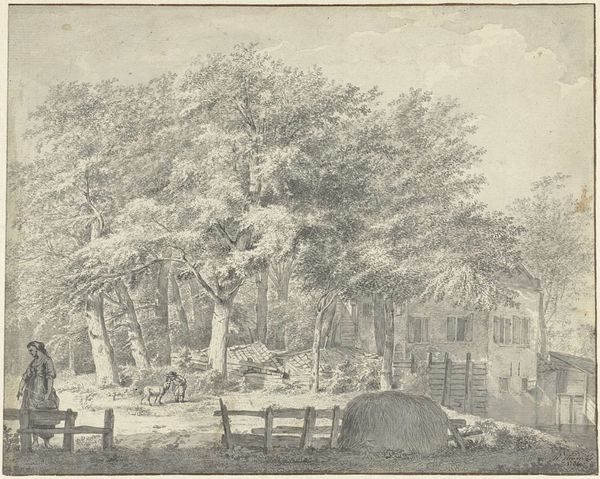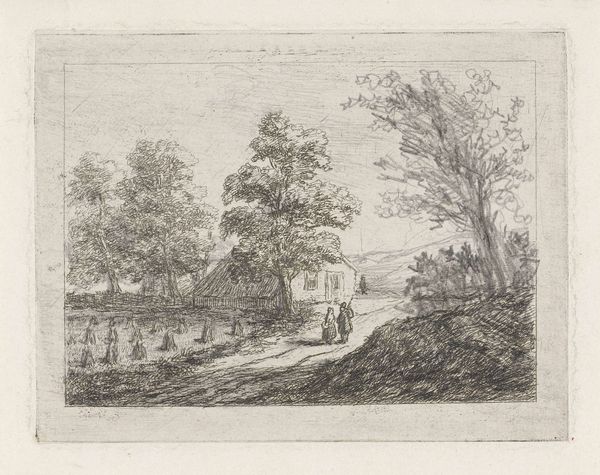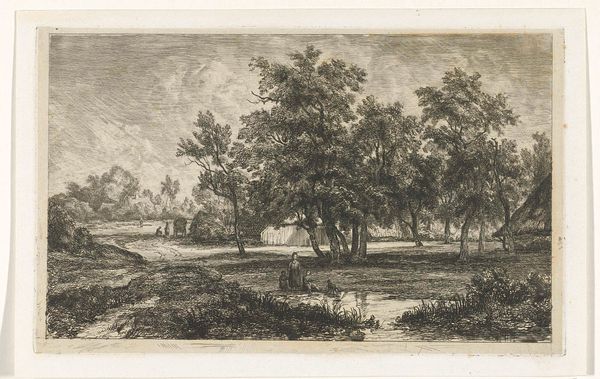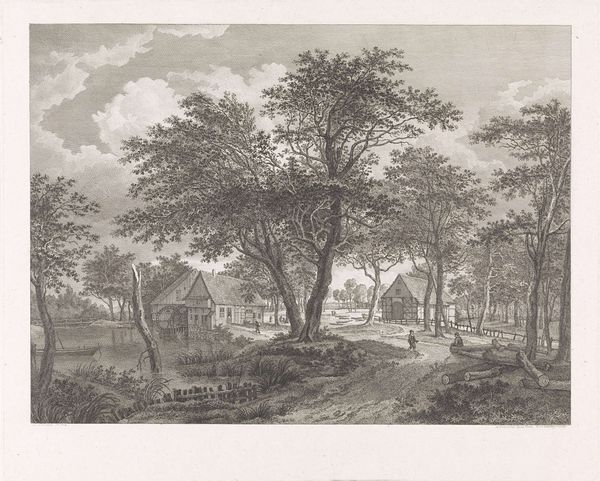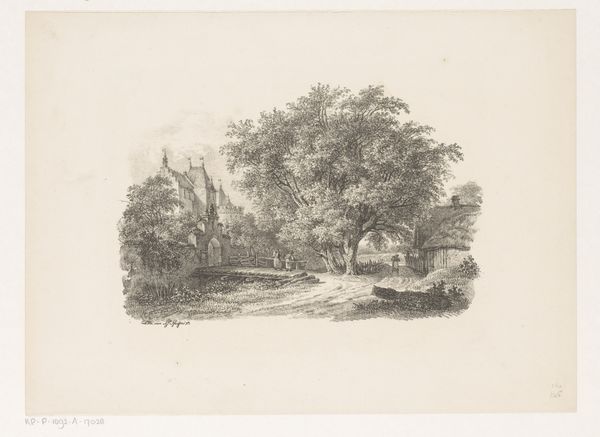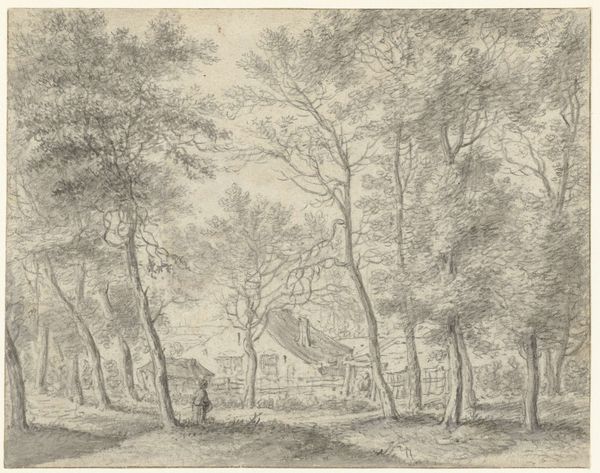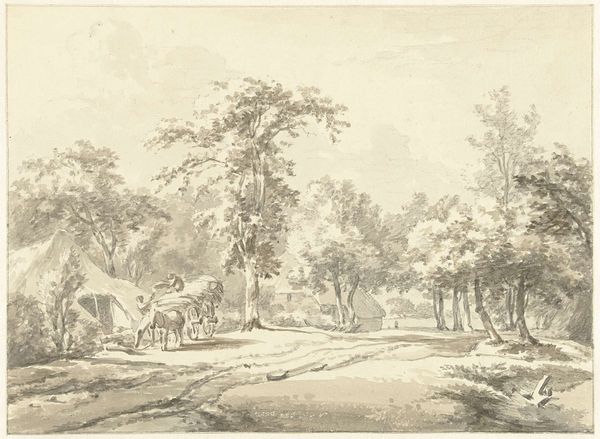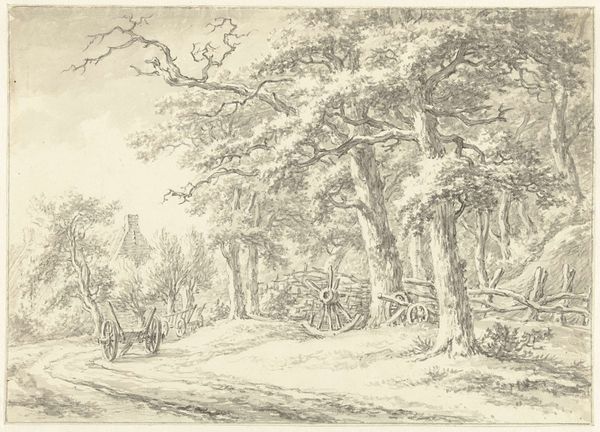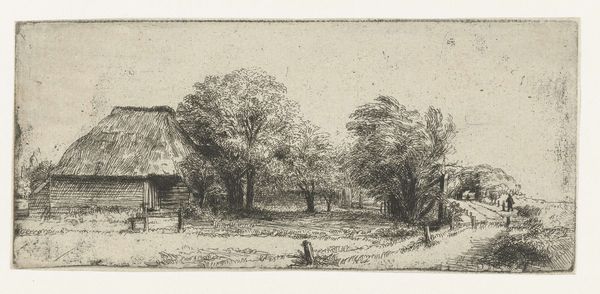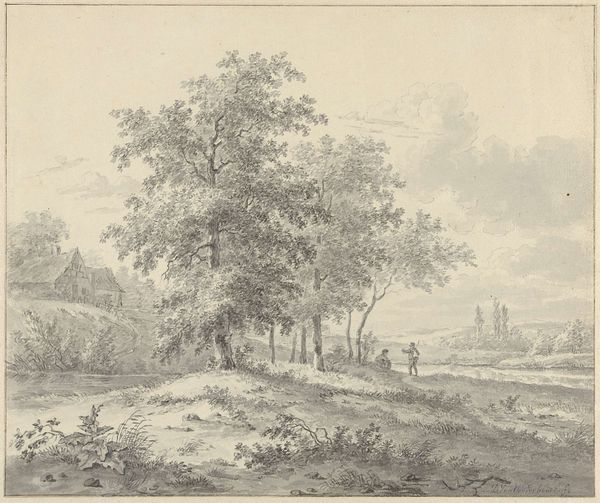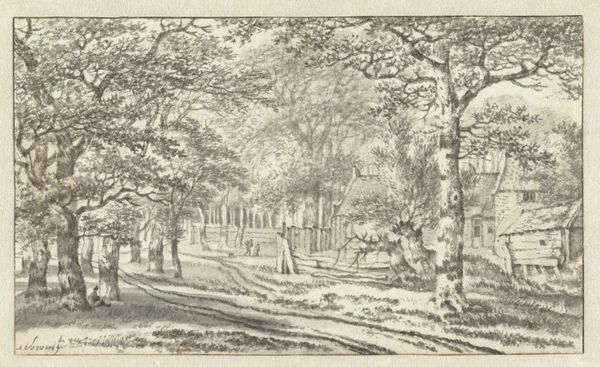
print, etching
#
baroque
# print
#
etching
#
landscape
#
genre-painting
Dimensions: height 85 mm, width 119 mm
Copyright: Rijks Museum: Open Domain
Philips Augustijn Immenraet made this etching of a landscape with a shepherd and his flock in the Netherlands sometime in the 17th century. Through closely worked lines, Immenraet evokes a harmonious vision of rural life. The image conjures a specific set of cultural referents. In the Dutch Golden Age, landscape painting rose to prominence. No longer simply the backdrop for religious or historical scenes, the land itself became a central subject. This shift reflects changing social and economic conditions. As the Dutch Republic prospered through trade and maritime power, a new merchant class emerged with money to spend on art. Landscapes offered these buyers a comforting vision of their nation. However, it’s important to remember that this vision was carefully constructed. Images of rural peace often glossed over the realities of agricultural labor and the social hierarchies of the countryside. To understand this artwork fully, we might consult contemporary maps, estate records, and social histories. These sources can reveal the complex relationship between art and society in the Dutch Golden Age.
Comments
No comments
Be the first to comment and join the conversation on the ultimate creative platform.
